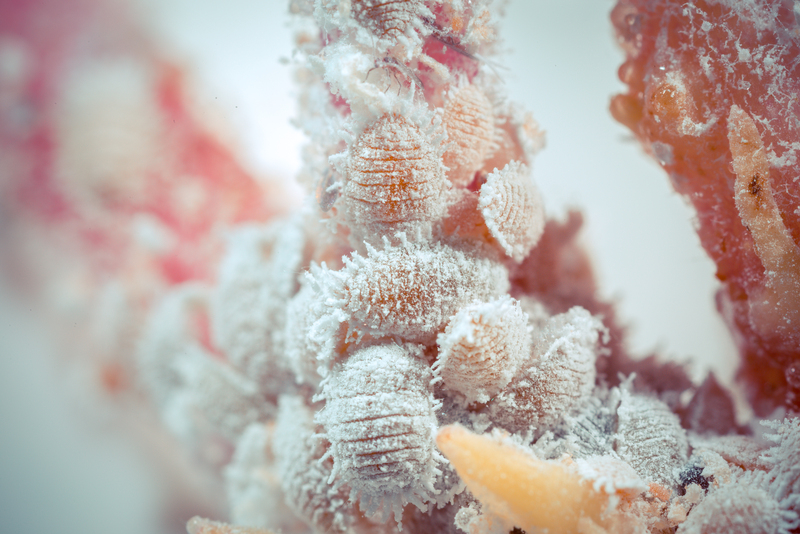
Roses are grown all over the world. Koppert has a wide range of biological pest control products that help keep your crops healthy and vigorous. Here is a list of options.
 Western Flower Thrips Frankliniella occidentalis on a leaf
Western Flower Thrips Frankliniella occidentalis on a leaf
Thrips
The integrated control (IPM) of thrips is strongly based on predatory mites. The most effective type of predatory mite depends on local conditions and the type of thrips that appears. You can choose from products such as Swirski-Mite, Limonica, Thripex, and Entomite-M. In addition, Horiver sticky traps are absolutely essential, not only to detect thrips but also to capture them.

Spider mite
Predatory mites (Spidex, Spical and gall midges (Spidend) are your greatest assets in your efforts to combat this pest. As the population of spider mites increases rapidly under dry, hot conditions, it is advisable to start as soon as possible.
 Greenhouse whitefly Trialeurodes vaporariorum adult
Greenhouse whitefly Trialeurodes vaporariorum adult
Whitefly
There is a broad range of products available to combat whitefly. The most suitable choice for you depends on the climate conditions. If infestation levels increase, predatory mites (Swirski-Mite, Limonica) are a good choice. If large amounts of whiteflies fly in from outside, you can use parasitic wasps (En-Strip, Ercal), preferably as a preventative measure. Furthermore, NOFLY WP™ is a good option for tackling whitefly. This product contains a fungus that harms this pest.
And last but not least, sticky traps are also essential for this insect.

Aphids
The good news is that aphids have all sorts of natural enemies. The best strategy for you to use depends on the type of aphid you encounter. The options in a nutshell are ladybirds, parasitic wasps, gall midges, and lacewings (Chrysopa). Again, aphids are a pest that you need to catch early.

Caterpillars
In order to know the type of butterfly you are dealing with when faced with caterpillars, it is useful to set out pheromone traps to attract the male butterflies. The damage is caused not by the butterflies, however, but by the caterpillars. These can be tackled with beneficial nematodes: Entonem and Capsanem.

Mealybug
Mealybugs present a tricky problem. The predatory beetle Cryptobug may sometimes provide a solution, but it mainly works with high temperatures and humidity.
Focus on plant resilience
It is becoming more and more apparent that crop resilience is a crucial factor in the IPM strategy. You can strengthen plant resilience with the beneficial fungus, Trichoderma harzianum T-22 (Trianum). The product provides benefits in several areas: it strengthens resilience, combats pathogenic fungi and Agrobacterium, and improves the uptake of water and nutrients.